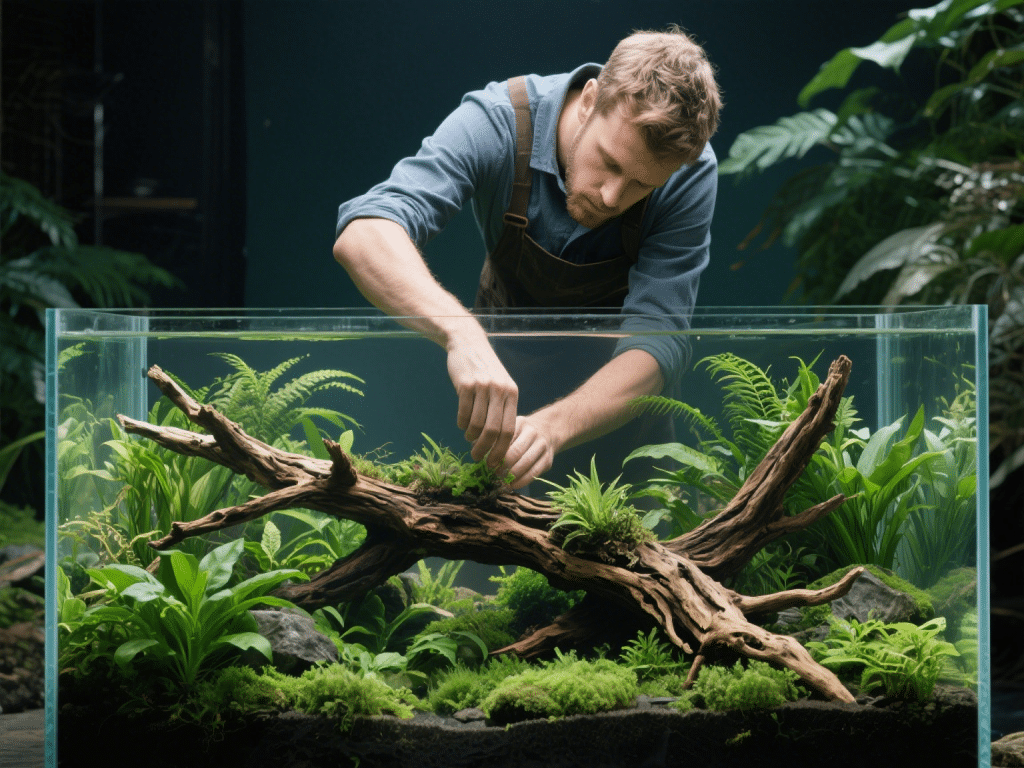
Introduction
Aquarium hobbyists increasingly seek sustainable decor choices to minimize environmental impact and create natural, healthy habitats. Eco-friendly decor not only benefits fish health but also reduces waste. This guide offers creative, green aquarium decor ideas using natural, recyclable materials.
1. Benefits of Eco-Friendly Decor
Natural Aesthetics: Mimics wild habitats, reducing fish stress and supporting natural behaviors.
Environmental Responsibility: Decreases reliance on plastic decorations and unsustainable resources.
Biological Filtration: Live plants and natural materials support beneficial bacteria, improving water quality.
2. Sustainable Substrate Options
Recycled Glass Gravel: Made from crushed, colored glass; inert, non-toxic, and visually appealing.
Natural Sand: Washed, river-sourced sand creates an authentic, natural look for bottom-dwelling species.
Clay-Based Substrates: Nutrient-rich for live plants; provides essential minerals and promotes root development.
3. Natural Hardscape Materials
A. Driftwood
Selection: Source from sustainable suppliers; ensure it’s untreated and aquarium-safe.
Preparation: Soak and boil driftwood for several hours to remove tannins and eliminate pathogens.
Use: Position as focal points or tunnels; attach mosses or epiphyte plants like Java fern to create natural accents.
B. Rocks & Stones
Local Stones: Collect slate or granite from uncontaminated sources; rinse thoroughly before use.
Lava Rock: Lightweight, porous, supporting bacterial colonies for biological filtration.
Aquascaping Techniques: Stack stones to create caves and hiding spots; secure with aquarium-safe silicone.
4. Live Plant Integration
Low-Maintenance Plants: Java fern, Anubias, Amazon sword, and Cryptocoryne species thrive with minimal care.
Aquascaping Principles: Apply the “rule of thirds” for plant and hardscape placement to achieve visual balance.
Substrate Fertilization: Use natural clay pebbles or root tabs to support plant growth without chemical fertilizers.
5. Recycled & Upcycled Decor
Terracotta Pot Planters: Repurpose untreated clay pots as plant containers or fish hideouts; drill holes for water flow.
Upcycled Ceramics: Use old ceramic mugs or dishes without glaze as fish caves or plant holders; ensure no toxic materials.
Natural Fiber Accessories: Create hanging coconut fiber mats or ropes as bio-media and decorative elements.
6. Eco-Friendly Lighting & Equipment
LED Lighting: Energy-efficient, long-lasting, with customizable spectrums that support plant growth and color rendition.
Solar-Powered Filters: For outdoor ponds, solar filters reduce electricity usage. For indoor tanks, choose low-wattage, energy-efficient pumps.
Biodegradable Decorations: Bamboo or cork bark decorations naturally degrade without harming fish.
7. Maintaining a Green Aquarium
Water Conservation: Use water conditioners to extend intervals between changes; recycle tank water for houseplants.
Plant Propagation: Regularly trim and share live plant cuttings with fellow hobbyists to promote sustainable aquascaping.
Responsible Disposal: Donate old decor to local fish clubs or recycle inert materials; avoid sending plastics to landfills.
Conclusion
Eco-friendly aquarium decor enhances your tank’s beauty while supporting fish health and reducing environmental impact. By using natural substrates, live plants, recycled materials, and energy-efficient equipment, you create a thriving, sustainable aquatic ecosystem. Embrace resourcefulness and creativity to design a stunning, green aquarium that benefits both your fish and the planet.